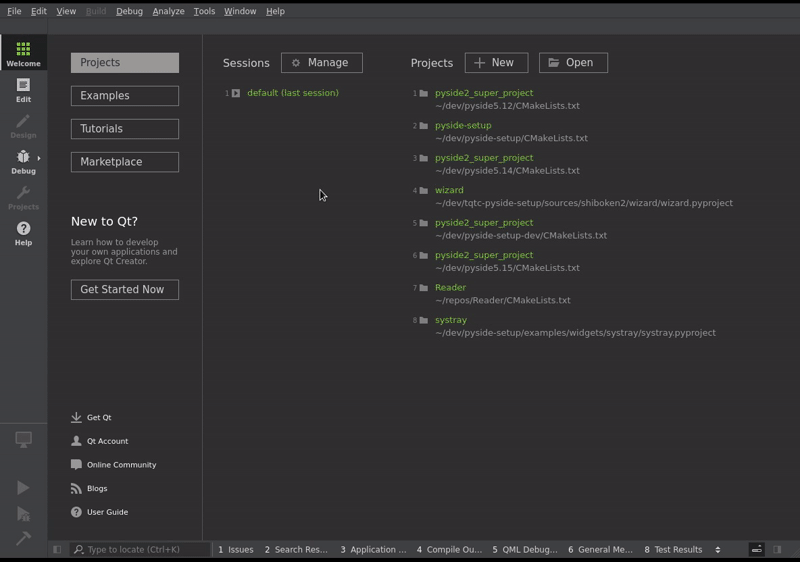Which IDEs Are Compatible?¶
Qt for Python, as any other Python module, can be used in any Python-compatible IDE, but not all of them will provide extra functionality like Qt Creator does.
Besides writing files, there are some external steps you might want to perform in order to help the development of your applications:
From a terminal:
Generating a Python file from a
.uifile: pyside6-uic -i form.ui -o ui_form.pyGenerating a Python file from a
.qrcfile: pyside6-rcc -i resources.qrc -o rc_resources.pyOpening Qt Designer with the command pyside6-designer to edit/create
.uifiles.
External add-ons/plugins from your favorite IDE might include configuration steps to run these commands, or open external tools like Designer and QtCreator.
QtCreator¶
You can create new projects based on some basic templates that are currently available in QtCreator. After selecting one, you will pass through some steps where you can specify the details of the template, like the project name, base Qt class to use for your interface, among others.
Here you can see an animation of the creation of a project:

Visual Studio Code¶
Besides editing the code of your application, you can use external plugins to
enable more functionality, like this unofficial
plugin
that you can install from VS Code while writing the following on the Quick Open Menu (Ctrl+P):
ext install seanwu.vscode-qt-for-python.
PyCharm¶
You can configure PyCharm to enable external tools, in Qt for Python terms, Qt Designer, and
Qt Creator. Go to File > Settings > tools > PyCharm External Tools, and include the following
information to add them to your project.
Later, you will be able to right click a .ui file, and select Qt Designer,
pyside6-uic, or any tool that you configured this way.
© 2022 The Qt Company Ltd. Documentation contributions included herein are the copyrights of their respective owners. The documentation provided herein is licensed under the terms of the GNU Free Documentation License version 1.3 as published by the Free Software Foundation. Qt and respective logos are trademarks of The Qt Company Ltd. in Finland and/or other countries worldwide. All other trademarks are property of their respective owners.
